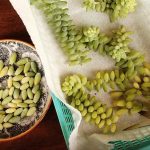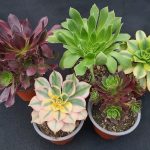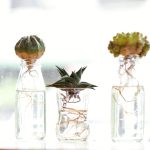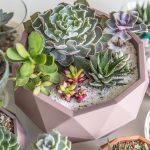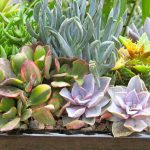Discover +20 succulents perfect for beginners that are easy to grow and can withstand a few gardening mistakes. Succulents are known for their resilience and low-maintenance, making them ideal for novice gardeners. Gardening expert, Madison Moulton, shares her top picks for beginner-friendly succulents.
Succulents are resilient plants that thrive in challenging conditions, attributing to their low-maintenance nature. Some succulents can be more challenging for beginners, but with the right knowledge, anyone can successfully grow them. Start your succulent journey with these +20 beginner-friendly options to avoid any horticultural hurdles.
Echeveria
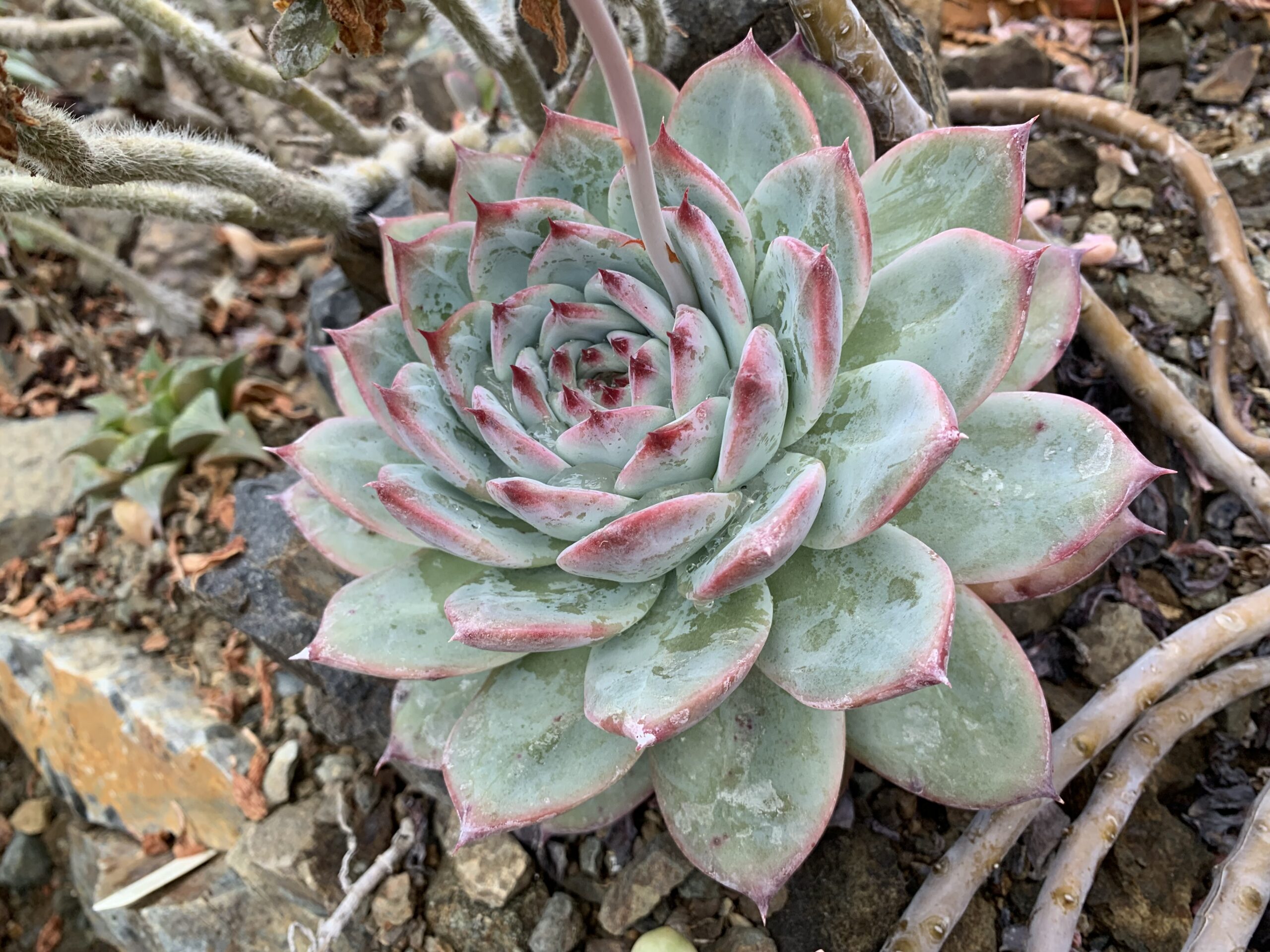
Echeverias are popular succulents that come in various colors and shapes, making them visually appealing. Their geometric patterns make them a standout choice for beginners. They require minimal care and prefer sunny spots to maintain their shape.
Sempervivum
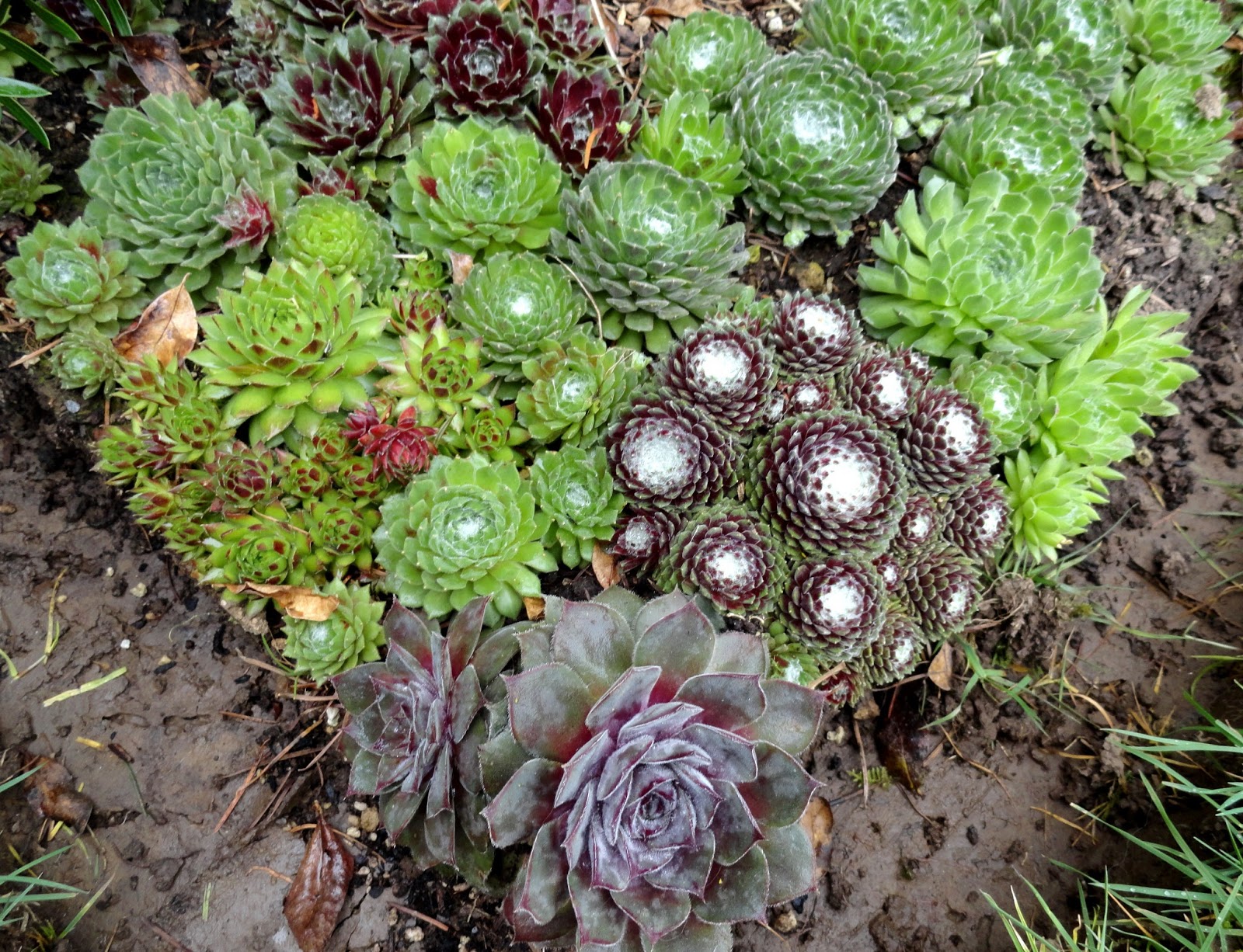
Sempervivum, or hens and chicks, is another excellent choice for new succulent enthusiasts. This plant is aptly named for its ability to produce small offshoots that resemble chicks around the main rosette, simplifying expansion of your collection.
Haworthia
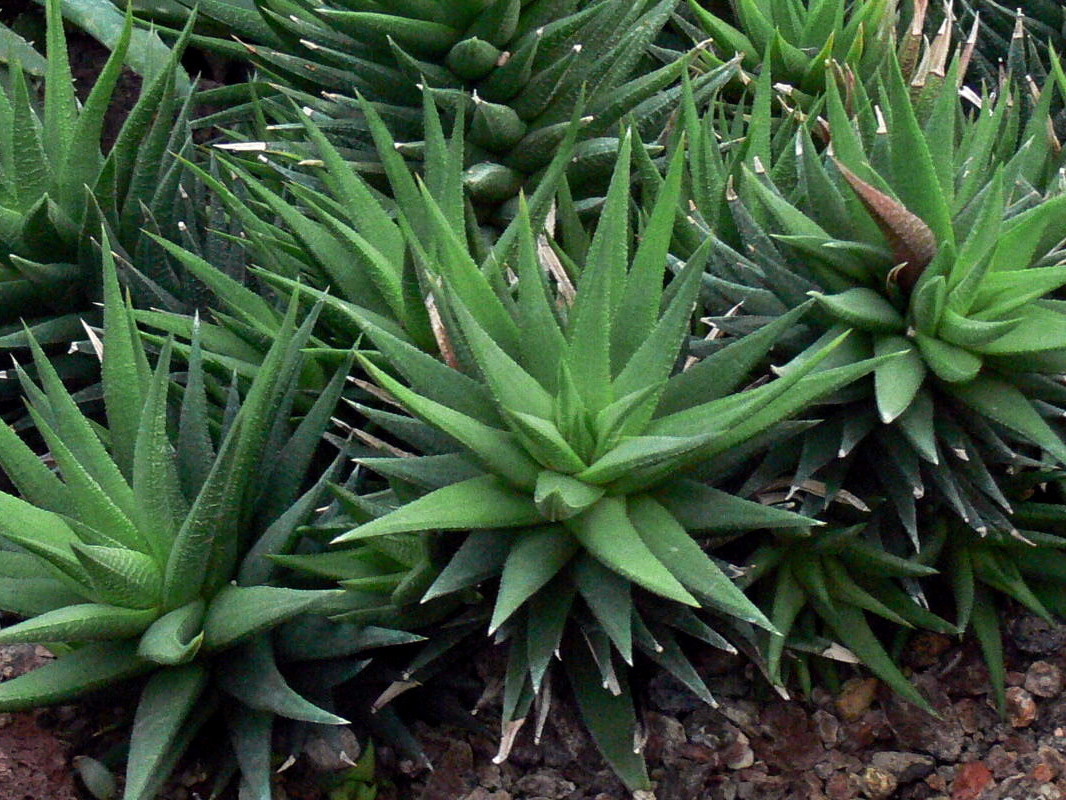
Haworthias, resembling aloe plants, are captivating succulents with lance-shaped leaves bearing intricate white ridges. Their compact nature makes them hassle-free and a great addition to any collection.
If you’re on the hunt for something with a structural and spiky appearance, the Haworthia genus is a perfect choice. These succulents resemble miniature aloes, maintaining their compact form as they spread beneath the soil similar to hen and chick plants. Available in various colors and patterns, the vibrant neon green variants are particularly appealing.
In suitable conditions, Haworthias can produce flowers on tall spikes. Placing them in a sunny location and shielding them from winter temperature fluctuations will encourage flowering.
Graptopetalum
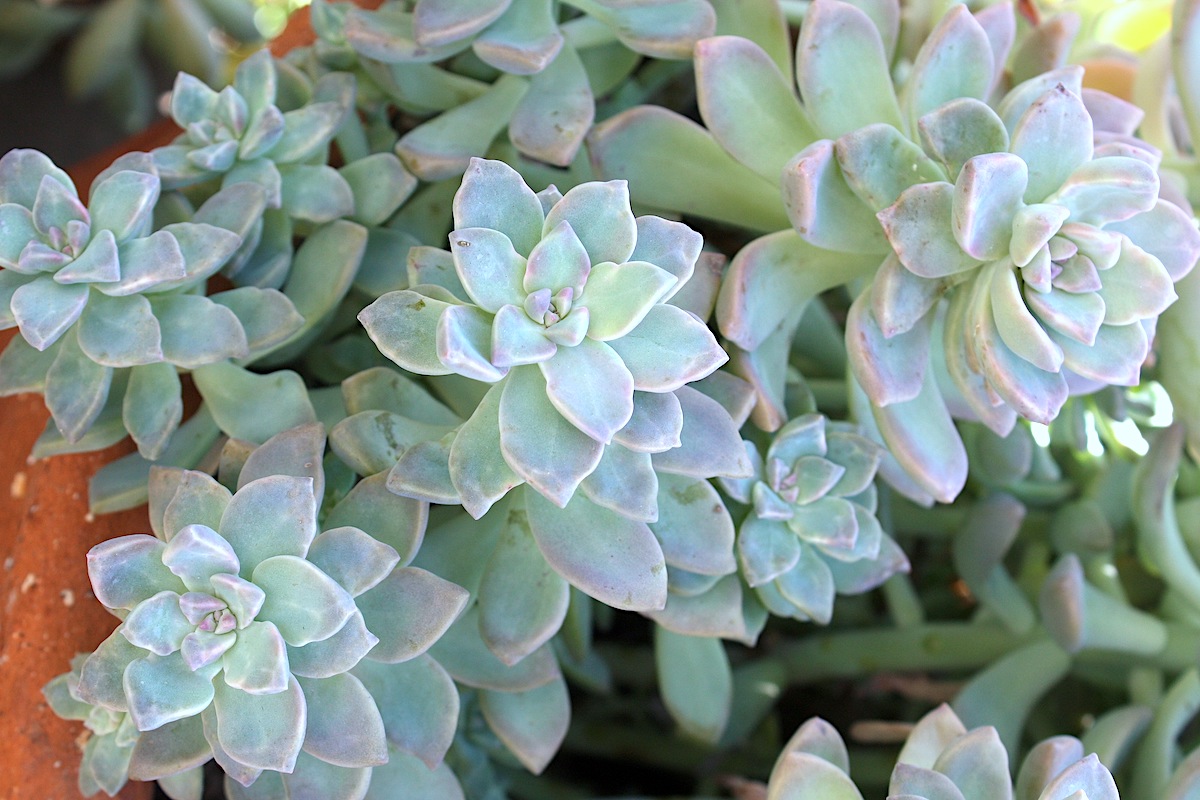
Graptopetalums, also known as ghost plants, are slightly larger but still appropriate for small pots or blending into sandy beds. Their reputation as ghost plants stems from the ethereal and pale hues of some popular varieties. To keep them content, ensure they receive adequate sunlight to prevent stretching towards light sources. A touch of water every few weeks and regular pest checks are sufficient care measures.
Graptoveria
Graptoveria, a crossbreed of graptopetalum and echeveria, offers a diverse range of colors and patterns. These hybrids propagate swiftly, effortlessly filling any container they’re placed in. They are low-maintenance and an excellent starting point for succulent novices. Plant them in well-draining soil and avoid overwatering to prevent root rot.
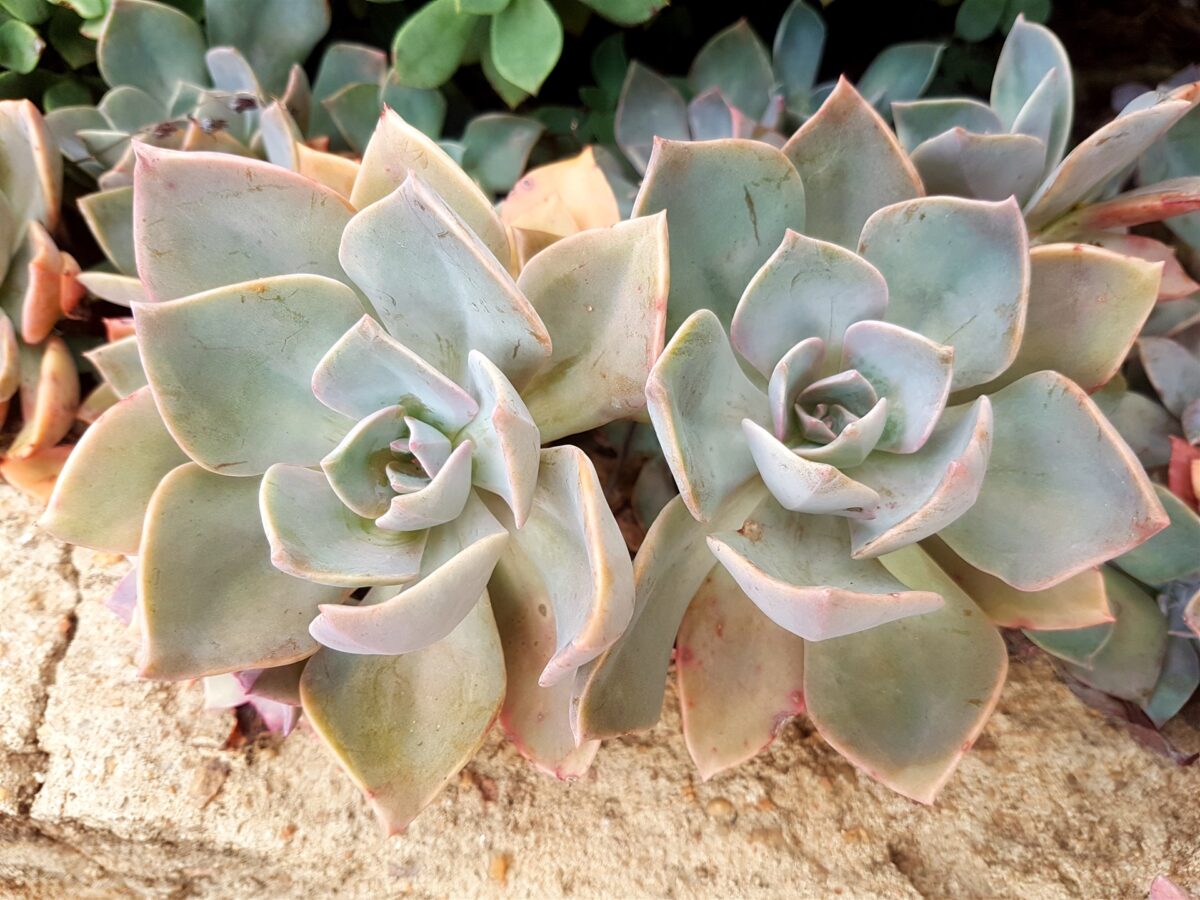
Pachyveria
Pachyveria, another echeveria hybrid, blends the qualities of this beloved genus with pachyphytum. This fusion results in a charming, compact succulent that maintains the plump appearance of pachyphytums while deriving structural elements from echeverias. Pachyverias stand out on their own, showcasing their unique beauty in any setting.
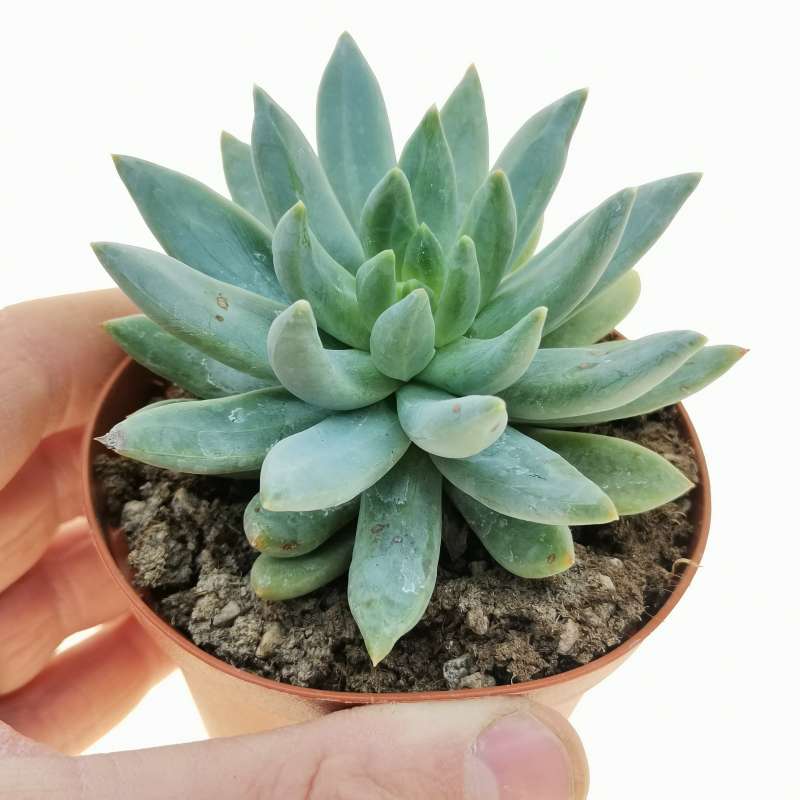
Consider pairing Pachyphytum with more pointed succulents to add a touch of softness and change up textures. These plants thrive in similar conditions as the previous genera, providing you with ample options for creating beautiful combinations with compatible companions.
Pachyphytum
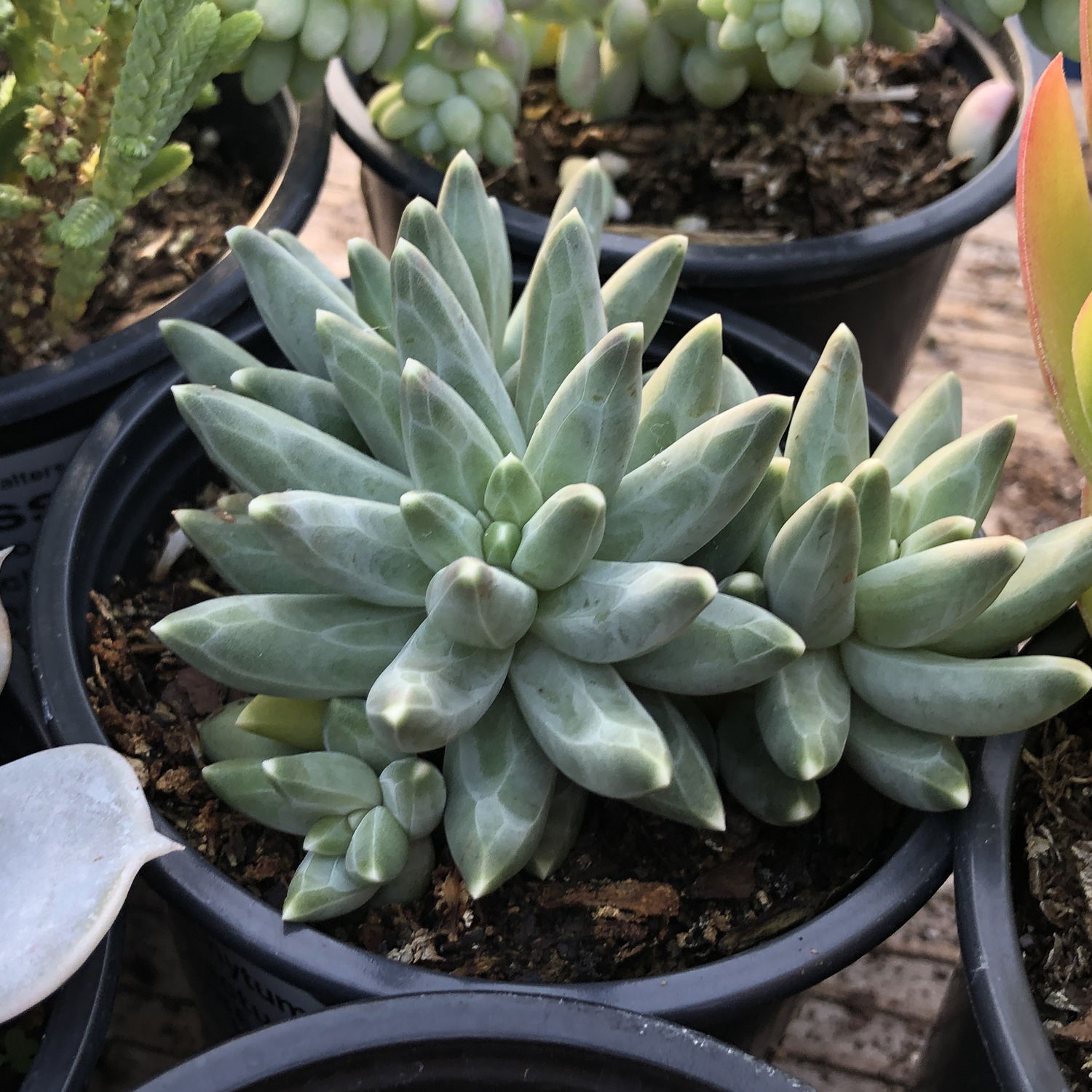
When you encounter a pachyphytum, its clustered shape and balloon-like leaves are sure to catch your eye. Despite their distinct appearance, these succulents are easy to care for, as long as you understand their specific requirements.
While they may look tempting to touch, it’s best to avoid handling them to prevent leaf damage.
Snake Plant
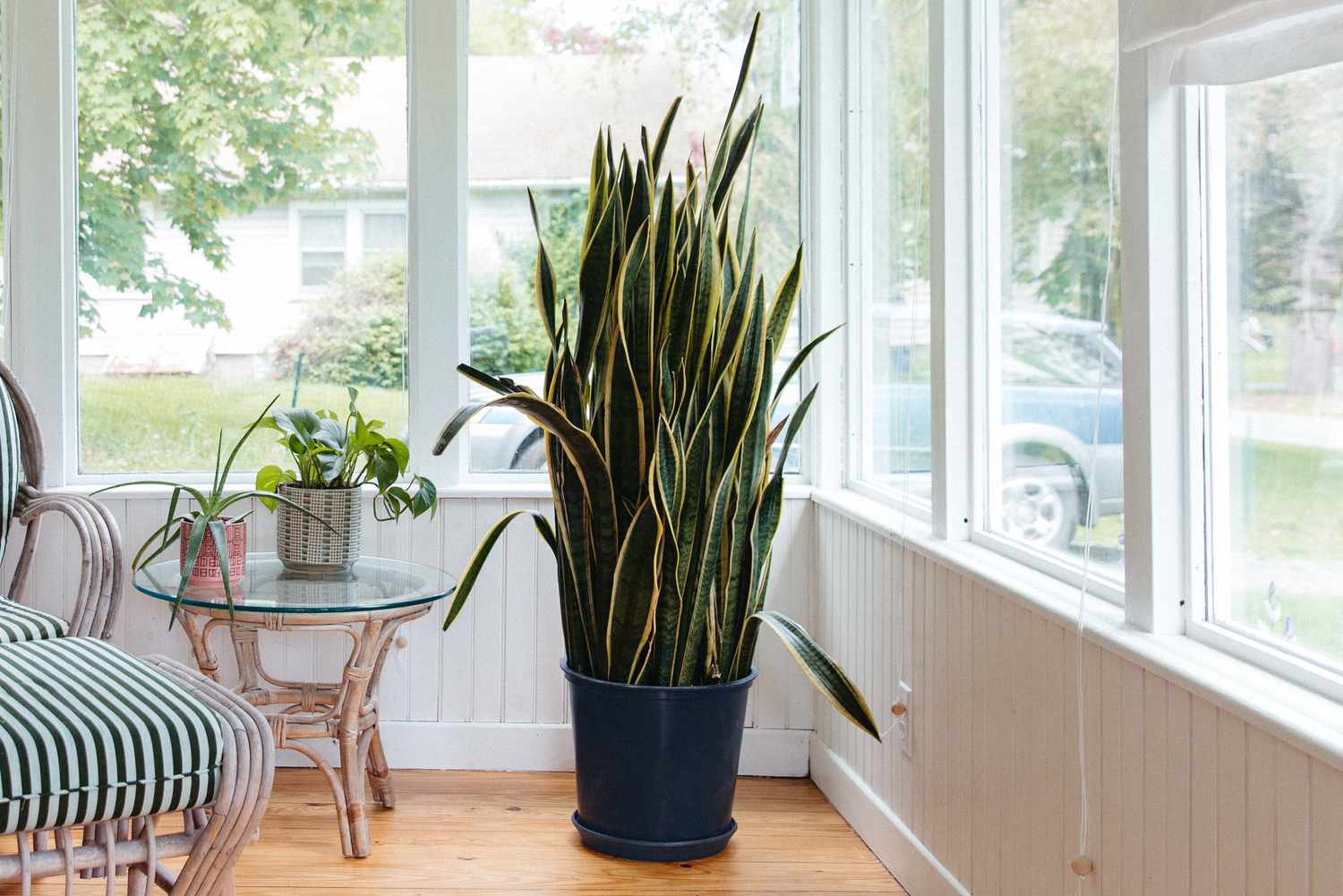
While most succulents prefer plenty of sunlight, some varieties can thrive in lower light conditions, making them suitable for indoor environments. The Snake Plant, also known as Sansevieria, is one such plant.
Characterized by its long, moisture-storing leaves, the Snake Plant can survive in low-light settings, although its leaves may stretch under these conditions.
Cotyledon
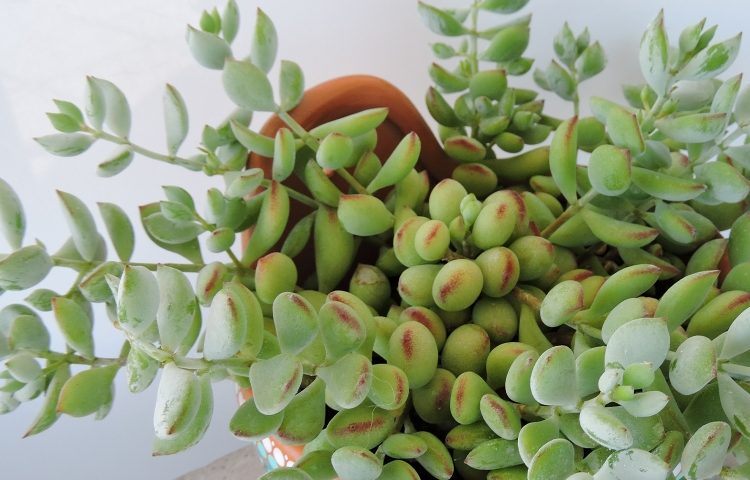
Cotyledon is a fascinating genus with a wide variety of shapes, making it hard to believe that some species are related. These succulents showcase leaves in different forms, ranging from slightly rounded to almost cylindrical.
Proper care for Cotyledon begins with understanding its specific needs. Some varieties thrive in hanging baskets, cascading elegantly, while others prefer larger patio containers. Fortunately, these plants are forgiving and can withstand some neglect, making them ideal for beginners.
Jade Plant
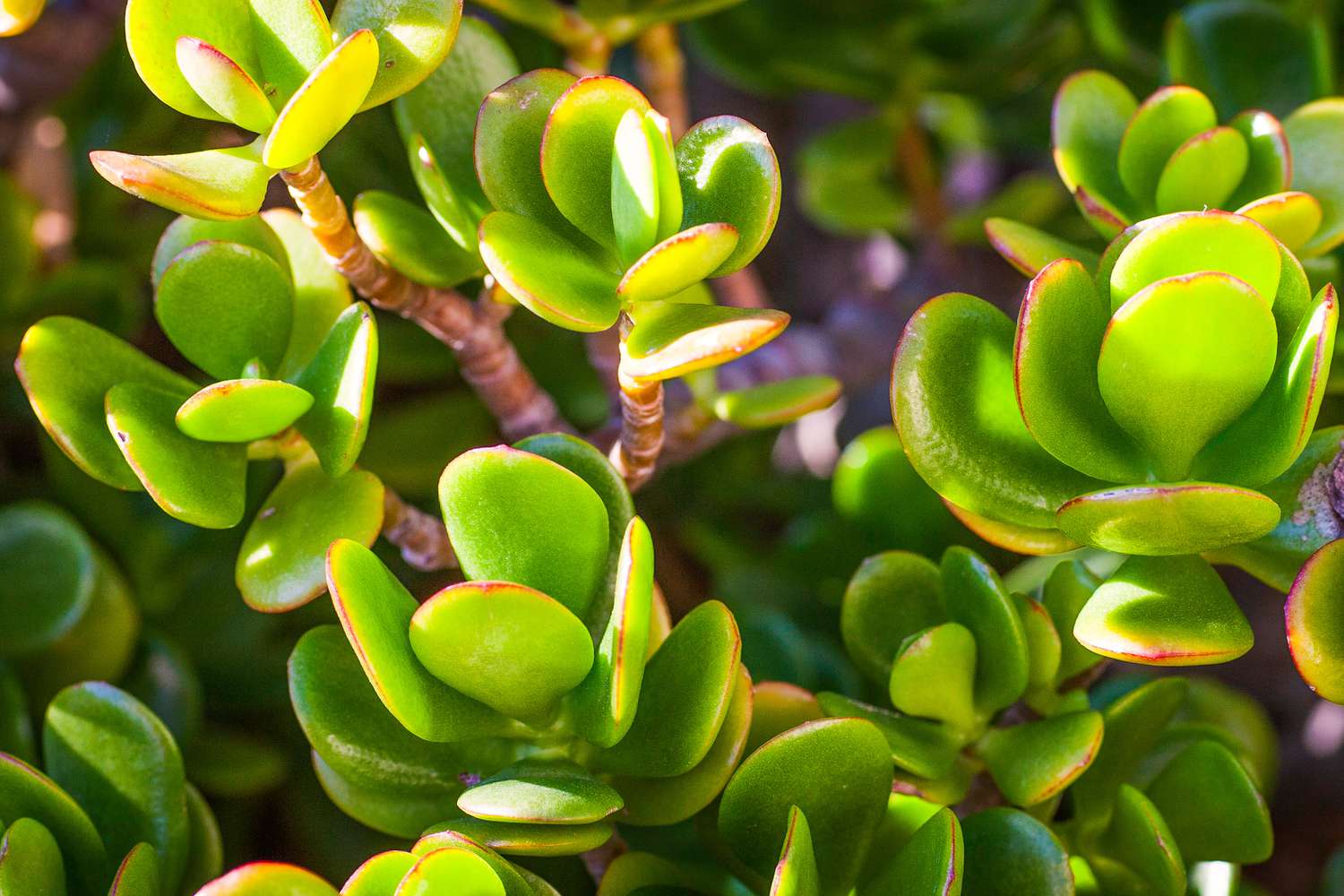
Characterized by its adaptability and resilience, Crassula ovata, the jade plant, thrives both indoors and outdoors, effortlessly adjusting to various environments. With a sturdy, tree-like structure reminiscent of bonsai trees, this succulent is a low-maintenance choice for all plant enthusiasts.
If you have doubted your gardening skills in the past, the jade plant might just change your perspective. By avoiding excessive watering, you can easily maintain this succulent, making it one of the simplest to nurture in the long run.
Elephant Bush
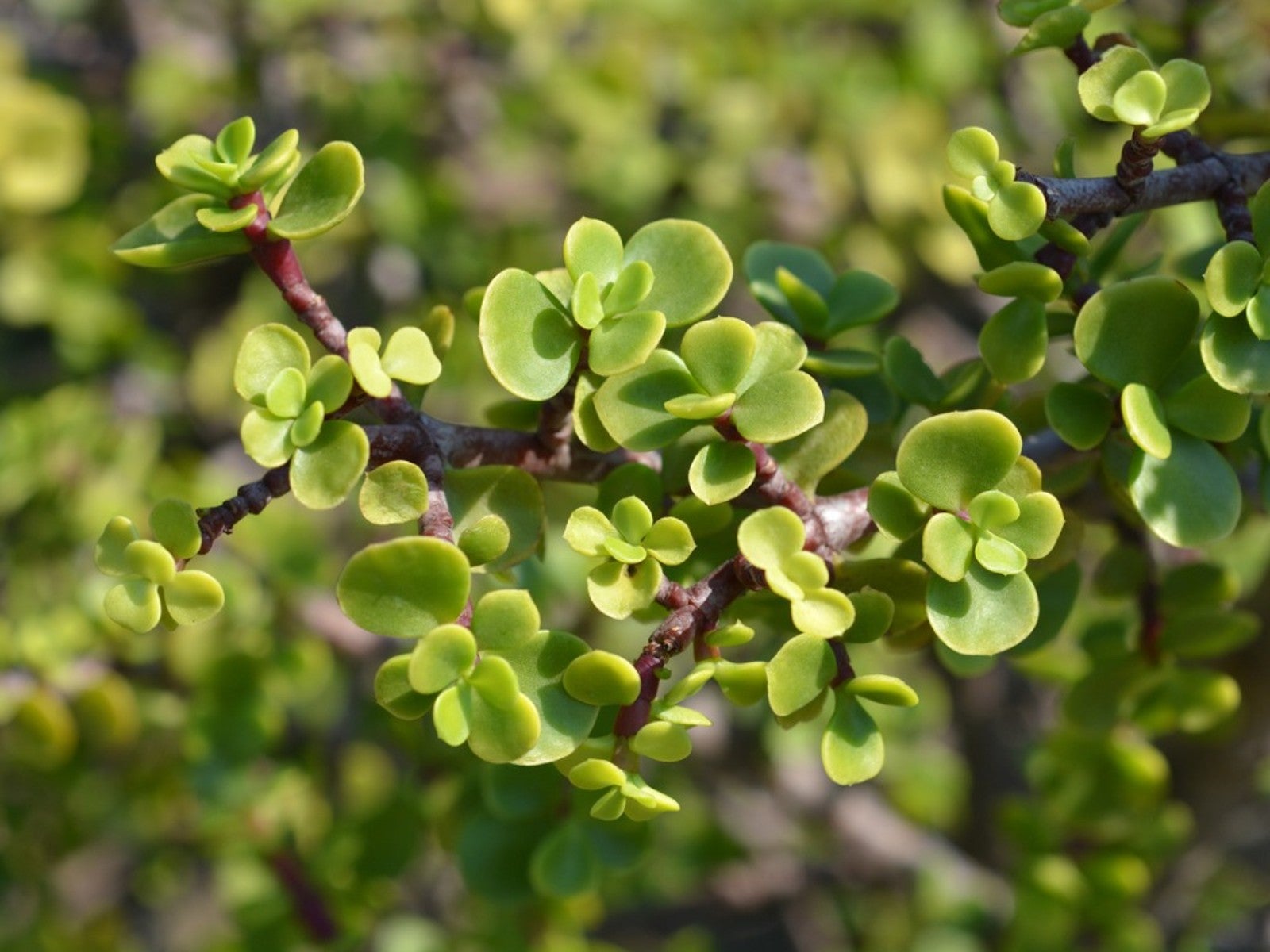
Hailed as a favored snack for elephants in Southern Africa, Portulacaria afra is an ideal succulent shrub for beginners. Keeping it in a petite form through regular pruning or allowing it to flourish in a larger container or garden bed is entirely up to you. I’ve personally kept one in a tall pot for years with zero issues – rain handles all the watering naturally.
Elephant bush is not just appealing to elephants but also to humans, as its leaves are edible. These juicy leaves are perfect for enhancing salads and blending into refreshing smoothies thanks to their high water content.
Portulaca
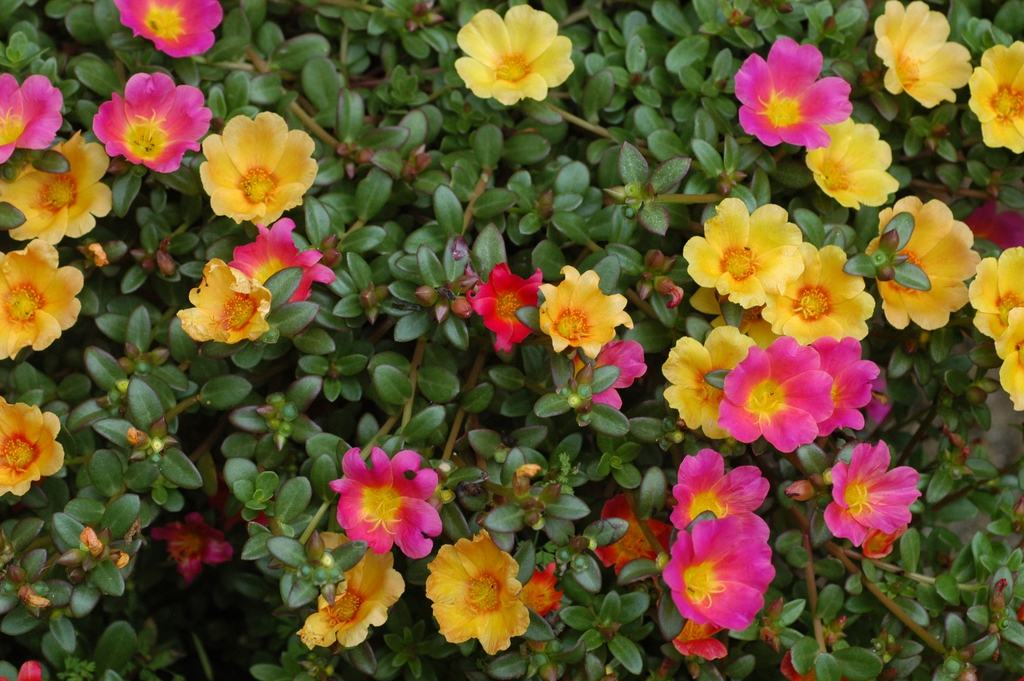
Unlike the preceding succulents primarily appreciated for their foliage, portulaca stands out for its exquisite flowers. With a vibrant array of warm colors, these flowers cover the entire plant, making it a charming addition to hanging baskets. Growing from easily accessible seeds, portulaca diverges from many other plants due to its simplicity in cultivation.
For optimal flowering, especially when grown in hanging baskets under direct sunlight, regular watering is crucial as the soil tends to dry out swiftly in these conditions.
Gasteria
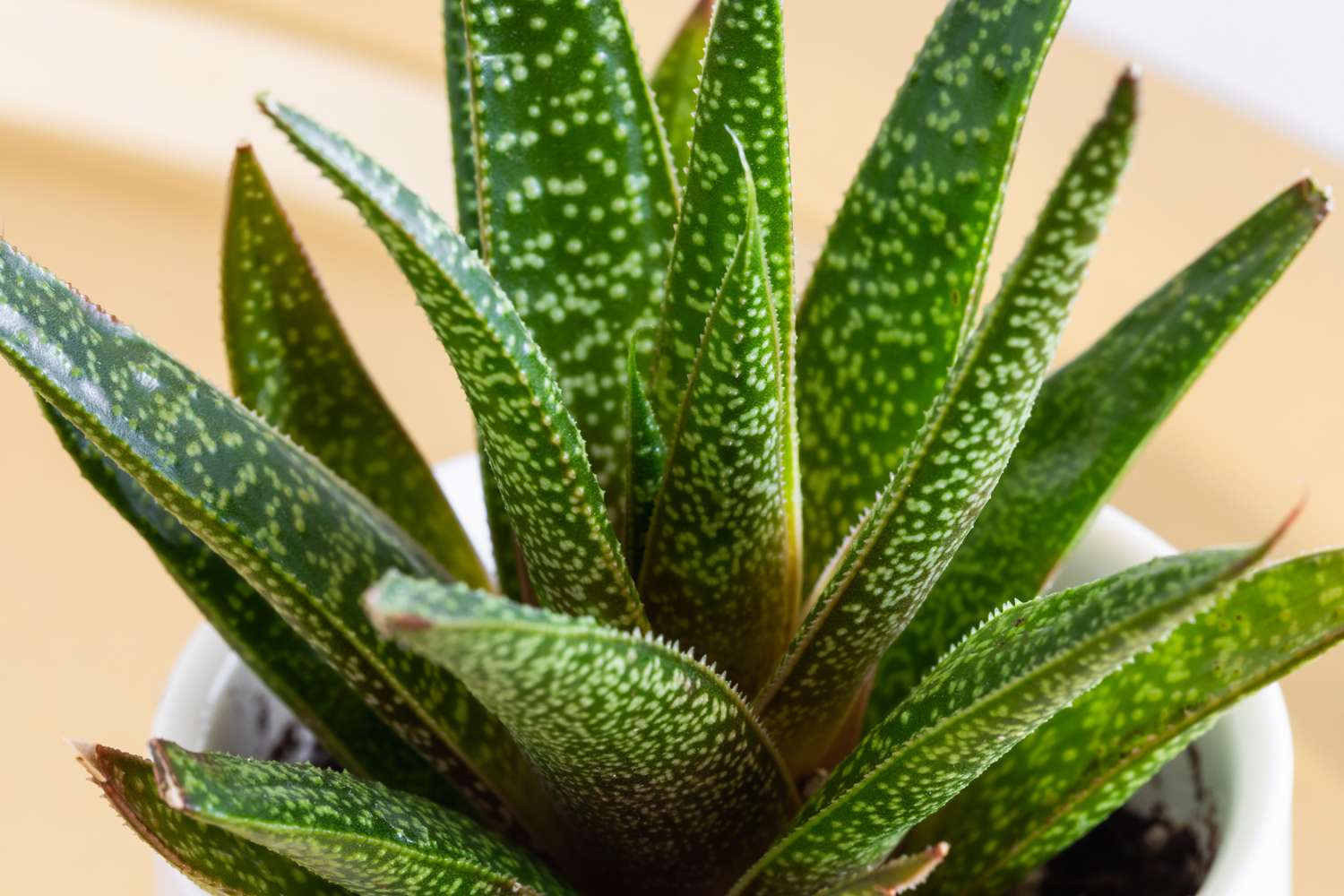
Gasterias have a similar look to many haworthia species but are usually larger. They share the same aloe-like appearance with pointed leaves that add a structured aesthetic to pots or beds in warmer climates. However, what sets them apart is their rounded and narrow leaves, contributing to a unique appearance uncommon in most plants.
Thriving best in lightly shaded spots, gasterias should be shielded from harsh afternoon sunlight to prevent leaf damage. The adaptability to such conditions also makes them well-suited for indoor cultivation, especially on a sunlit windowsill.
Lithops
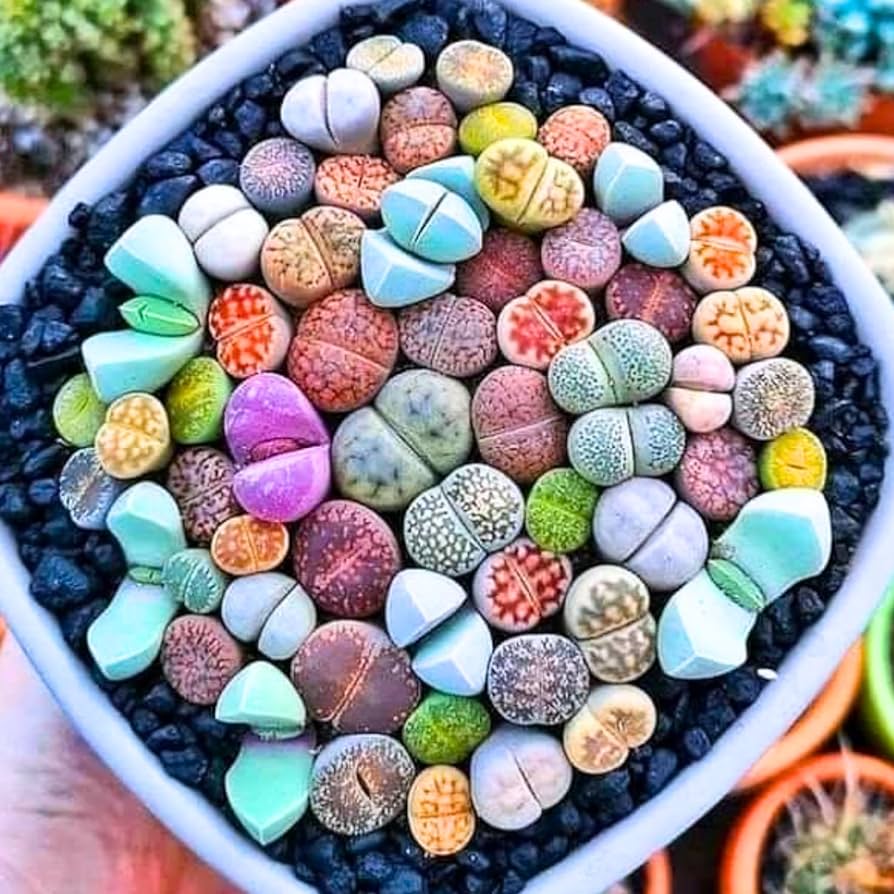
Adorable lithops are impossible not to love. Originating from harsh climates with intense sunlight and minimal rainfall, most of the leaf remains underground, with a clear top window for photosynthesis. As the leaf pair eventually divides, new leaves emerge at the center, offering a fascinating transformation to observe.
While many beginners inadvertently harm lithops, these charming succulents are actually quite forgiving if cared for correctly. A mere teaspoon of water can sustain these plants for weeks, and placing them in a bright, sunny location will promote their growth and wellness.
Burro’s Tail
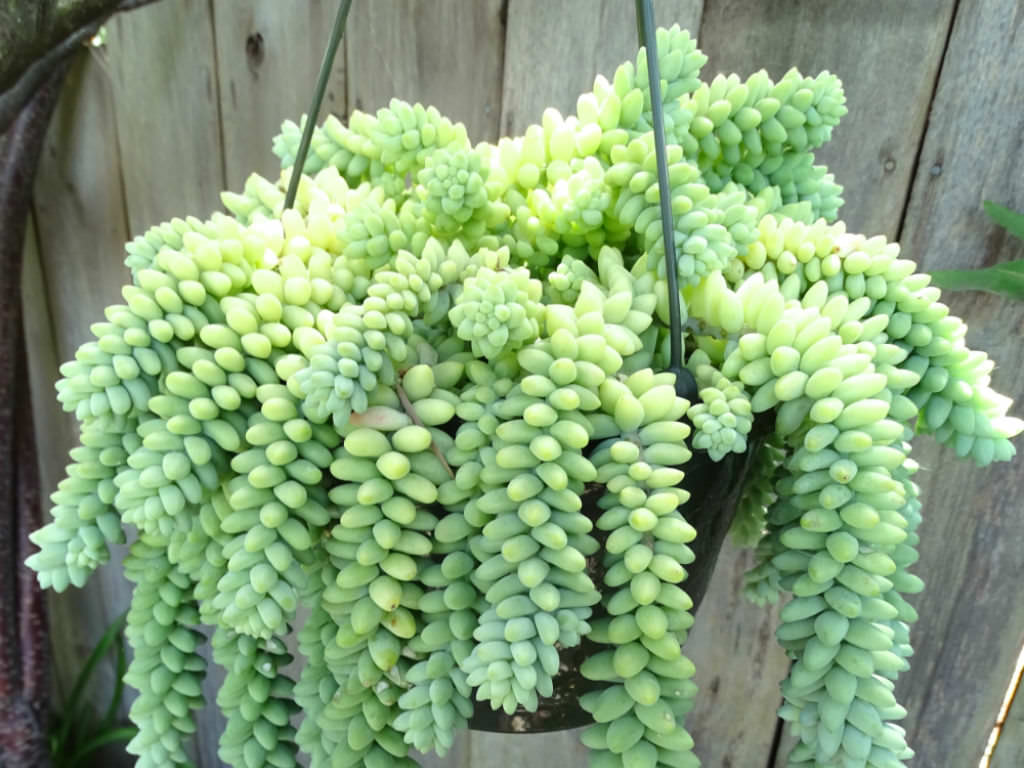
Another trendy choice for hanging baskets, burro’s tail brings charm to patios and balconies. The distinctive trailing stems packed with plump, tear-shaped blue-green leaves give this succulent its amusing moniker. Flourishing best in partial sun, these plants are also a good fit for indoor cultivation near a bright south-facing window.
Two common pitfalls for beginners cultivating burro’s tail are excessive watering and insufficient sunlight exposure. By sidestepping these issues, even novices can successfully nurture this plant without complications.
Ice Plant
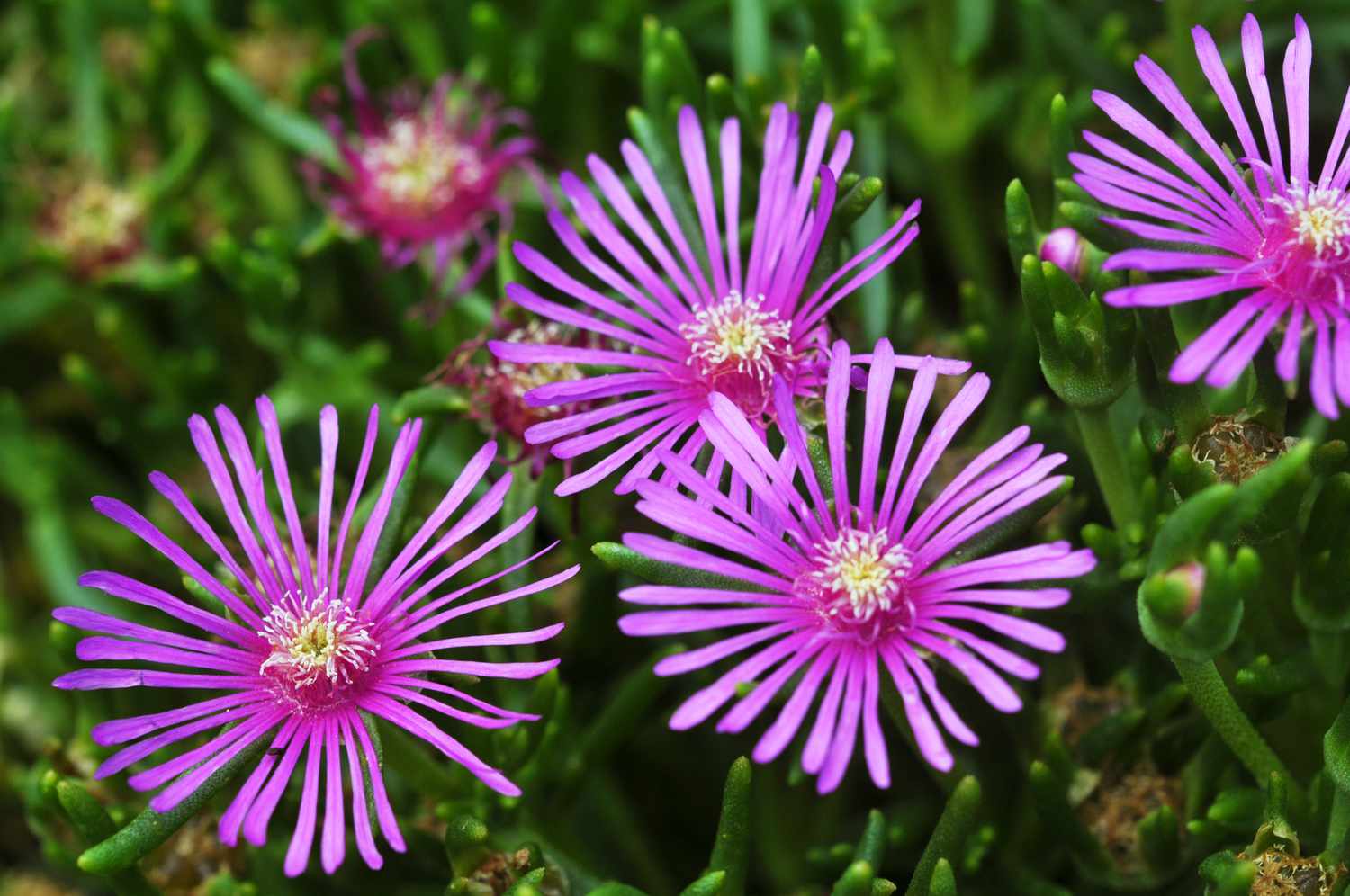 Choose ice plants for low-maintenance ground cover in tough areas, but avoid extremely cold conditions.
Choose ice plants for low-maintenance ground cover in tough areas, but avoid extremely cold conditions.
When it comes to finding a low-maintenance ground cover suitable for challenging conditions – especially sandy areas, ice plants are a top choice. These plants, with their resilient growth habits, make a superb alternative to lawns in areas that are typically hard to manage, providing a hassle-free garden solution for all skill levels.Despite the name suggesting otherwise, ice plants cannot withstand severe cold. While they can tolerate some temperature fluctuations, they are not suited for regions below USDA zone 5.
Stonecrop
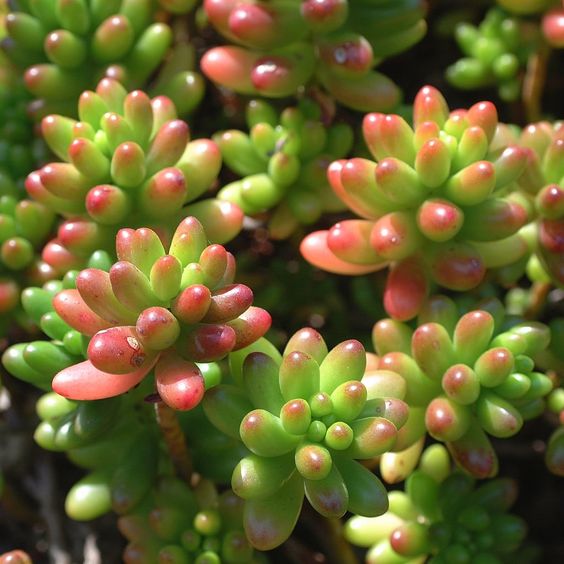
Stonecrop, a common name for plants in the Sedum genus, is highly favored as a groundcover. With over 400 species to choose from, including the previously mentioned burro’s tail, there’s a plethora of options to enhance every corner of your garden.
While specific needs may vary among species, the fundamental requirements remain the same. Planted in sandy soil and sparingly watered, these plants can thrive, avoiding the common pitfall of rot that often plagues them. Keeping to these conditions, beginners will find stonecrops gratifyingly undemanding.
Aeonium
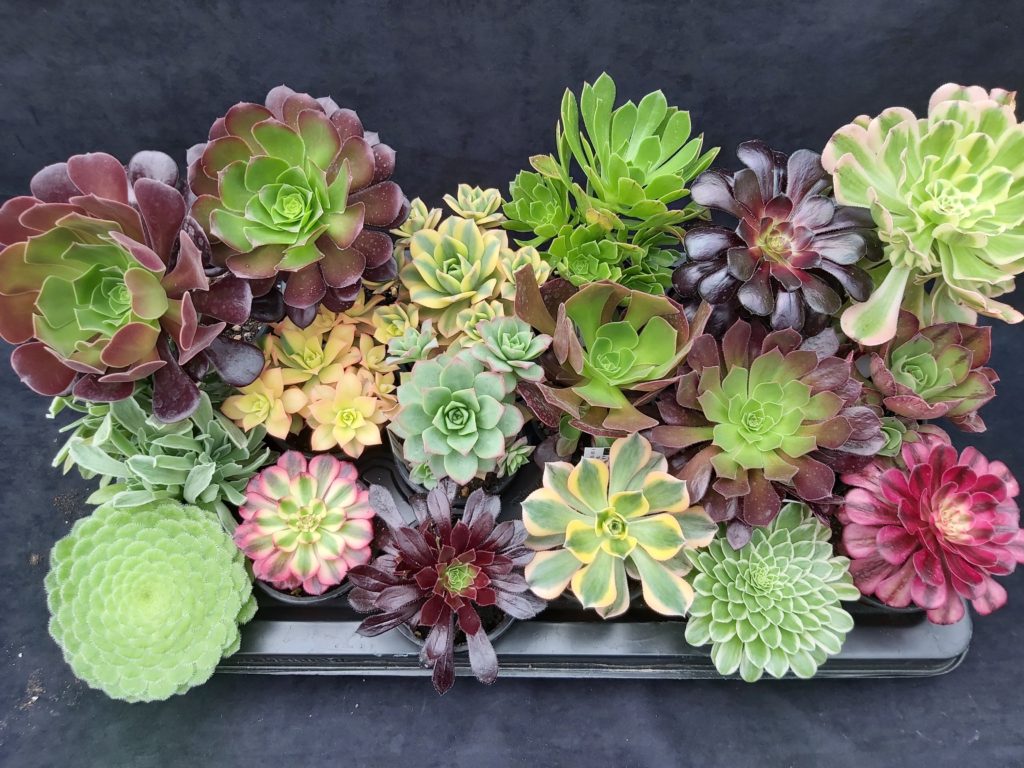
Renowned as tree houseleeks, these delightful succulents stand out effortlessly. Featuring the classic houseleek rosettes but on elongated stems, they add vertical interest and a tree-like form to your garden. They complement shorter succulents admirably, providing a fuller look to any container they are housed in.
For novice gardeners seeking color variety, there are multiple hues to select from. Consider the black aeoniums for their striking deep purple foliage if you desire a more dramatic touch to your space.
Kalanchoe
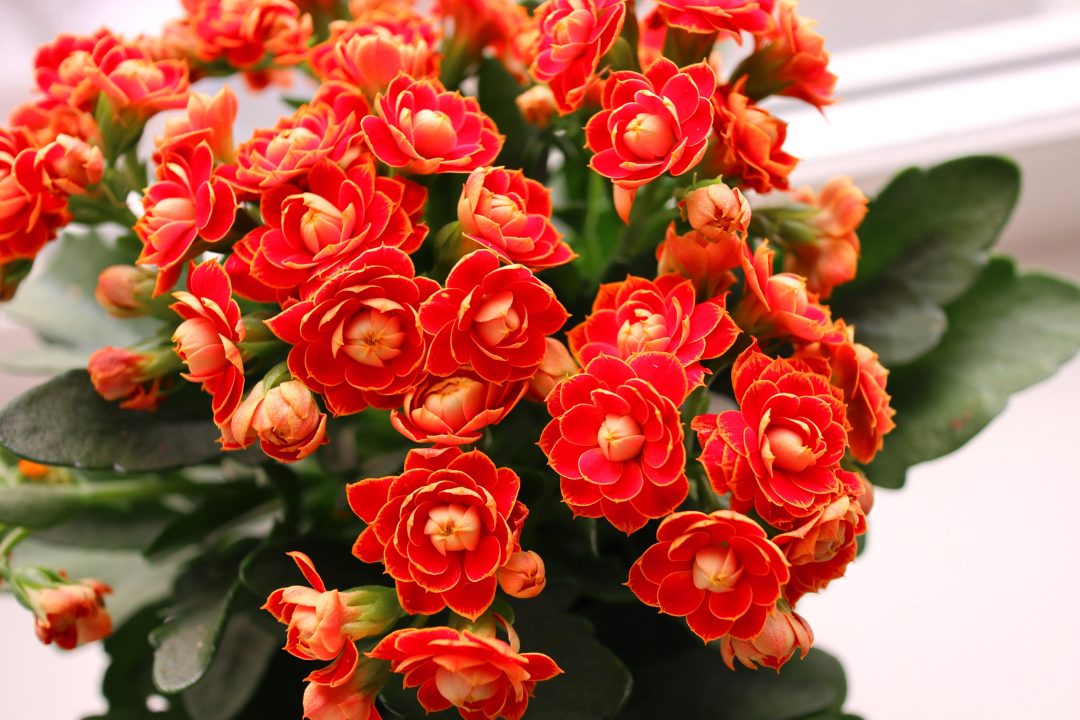
Kalanchoe, favored for its bright flowers, thrives in low light and prefers well-draining, gritty soil.
Kalanchoe, a favorite genus among houseplant enthusiasts, stands out for its vibrant flowers. These plants, with glossy, fleshy leaves and scalloped edges, often bloom in bright yellow hues. They are versatile, flourishing in both indoor and outdoor settings, even in low light conditions.
When considering how to plant your kalanchoe, regardless of the species, opt for well-draining, gritty soil. If you prefer not to mix your own, seek out potting mixes labeled specifically for ‘succulents and cacti’ to cater to their needs accurately.
African Milk Tree
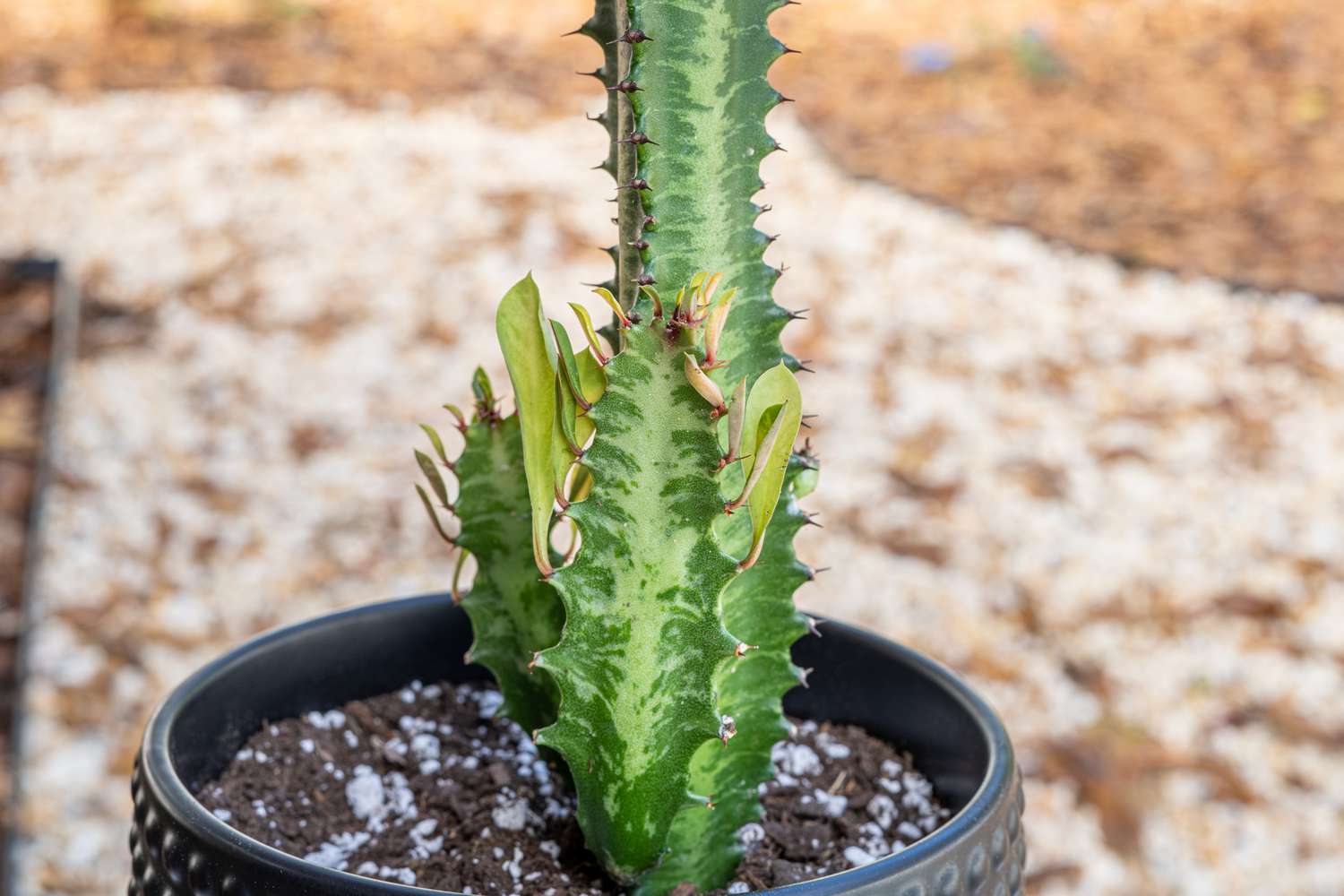
The African Milk Tree, or Euphorbia trigona, is a succulent that mimics the appearance of a cactus without belonging to the cactus family. This plant, known for its tall, erect stem with protective spikes, adds vertical interest to succulent arrangements. Its structure, resembling a palm tree, earns it the alternative name of cathedral cactus.
To ensure your African Milk Tree reaches its full height potential, plant it in a sizeable container with well-draining soil and provide ample direct sunlight to maintain its shape and prevent elongation.
Desert Rose
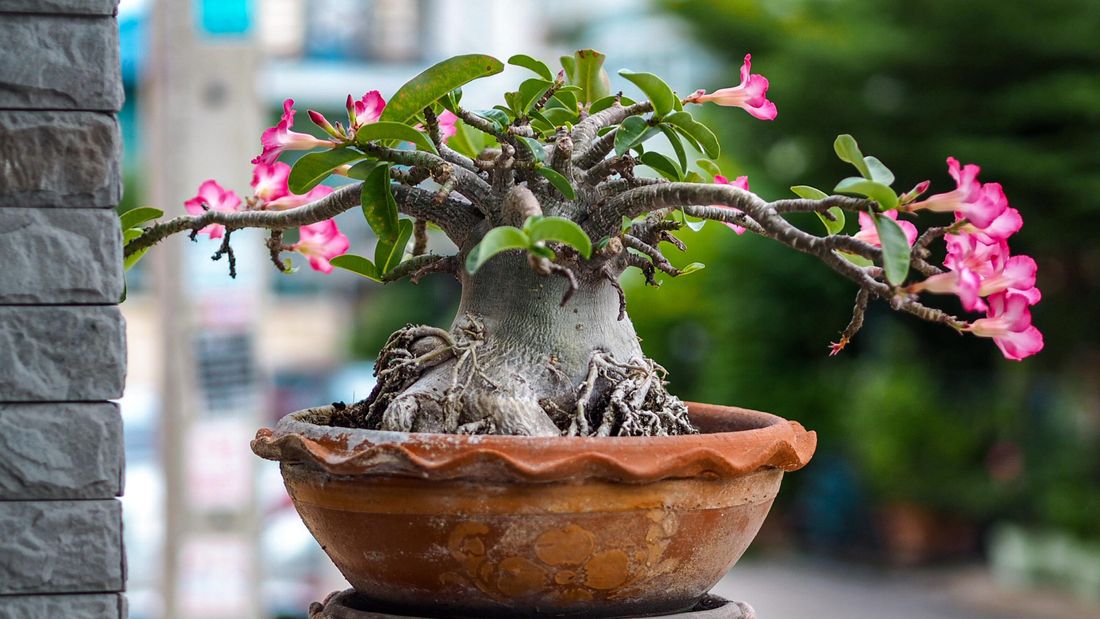
The Desert Rose, scientifically known as Adenium obesum, captivates with its rose-like blooms in vibrant pink shades emerging from a thick succulent stem, resembling a miniature bonsai tree. These tubular flowers with frilly petal edges and glossy, dark green oval leaves create a visually appealing display.
Despite its intricate appearance, the Desert Rose is low-maintenance, thriving in desert-like conditions with plenty of sunlight and minimal watering to remain healthy and vibrant.
Agave
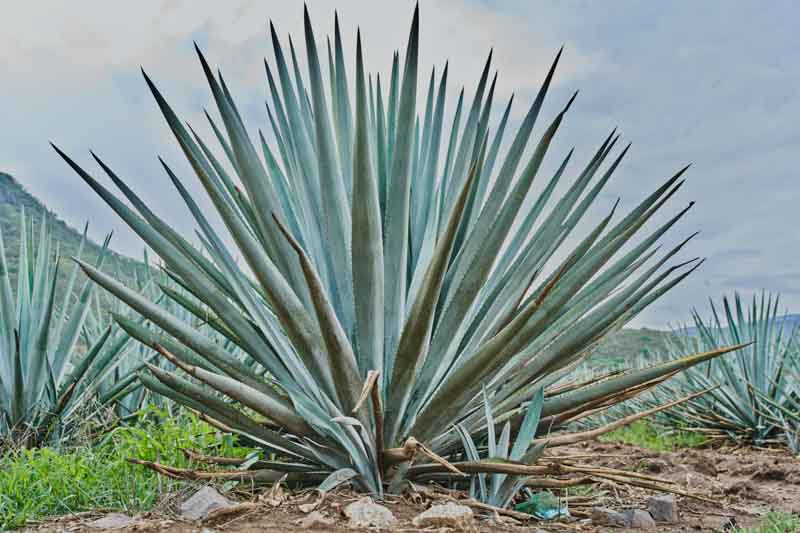
Agaves are impressive in garden beds but need little water and are beginner-friendly.
Transforming a garden bed, agaves, the large succulents, quickly develop into captivating rosettes of varied shapes. Thriving on minimal watering post-planting, these hearty succulents are perfect for novice growers in warmer USDA zones.
Within this diverse genus, selecting one can be daunting. Opt for the soft yet structural foxtail agave for beds and the Queen Victoria agave with its mesmerizing colors for containers.
Madagascar Palm
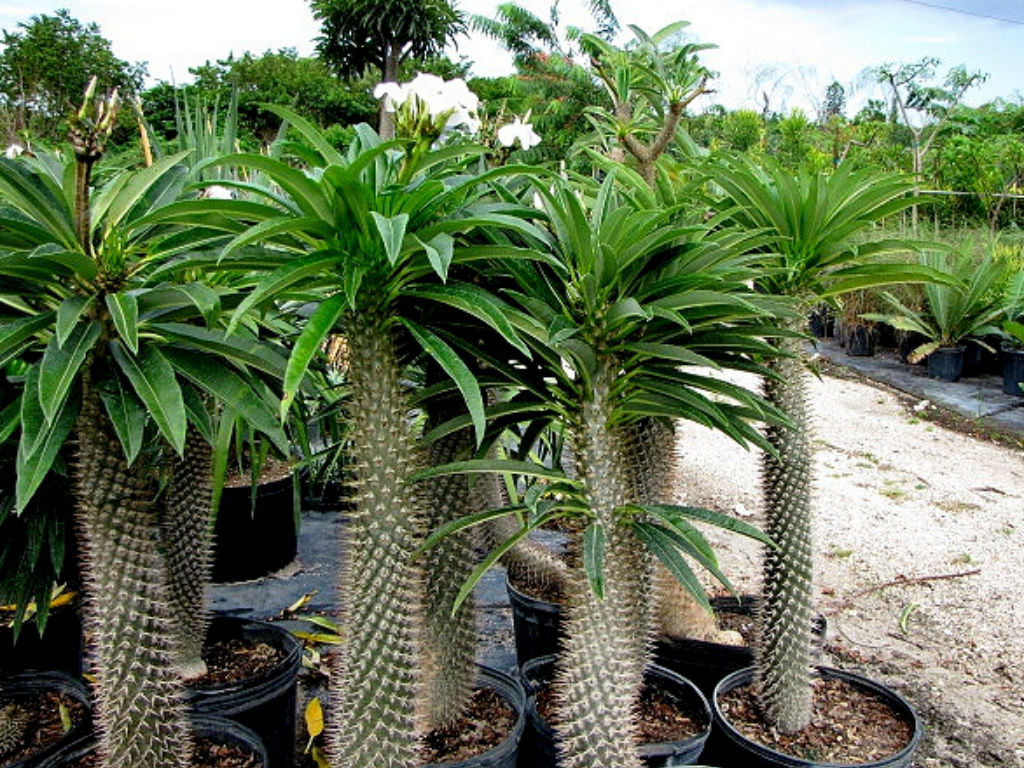
The Madagascar palm, part of the tree-like succulent category, boasts a robust stem armored with spikes for protection. Its top foliage spreads out like a palm, inspiring its name, despite no botanical relation to actual palms.
Potted individuals must guard against toppling due to increased size. Repot into something more stable or add weight like pebbles to the pot to stabilize it.
Aloe
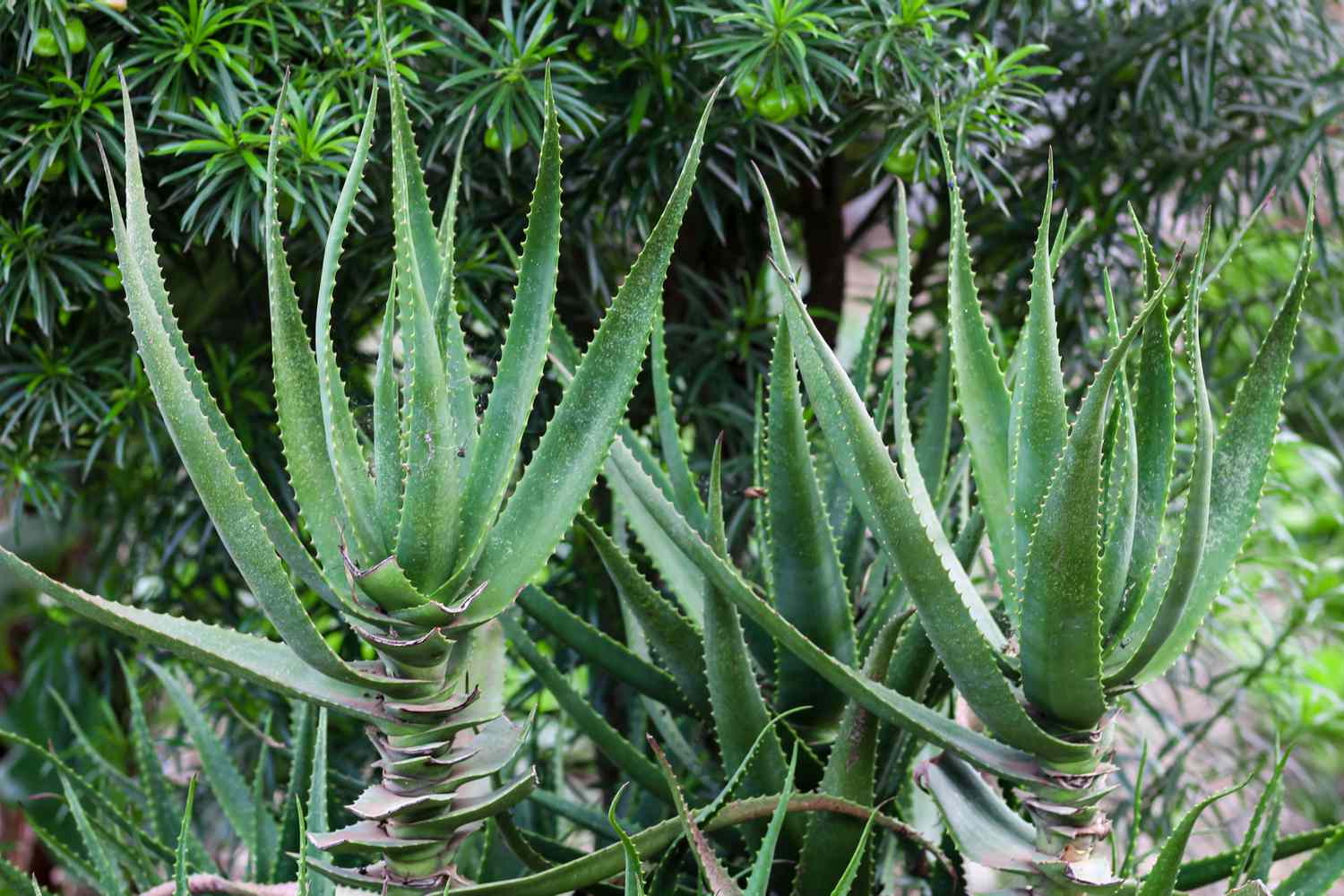
Renowned globally for their medicinal uses, the Aloe genus, particularly Aloe vera, known for its beauty and healing properties, thrives indoors and in skincare. The multitude of species available cater to all gardening skill levels.
Quickly growing in optimal conditions of ample sunlight and well-draining soil, aloes are rewarding to cultivate. Consider the mature size of your chosen species to minimize repotting.
Fenestraria

Baby toes thrive in sunlight and feature many cylindrical, toe-like leaves.This gorgeous succulent, popularly called baby toes, showcases charming leaves that resemble tiny toes emerging cylindrically from the soil. These plants, also known as lithops, have transparent windows atop their leaves to aid in photosynthesis as they grow mainly underground.
Baby toes, classified as true desert succulents, thrive in bright sunlight and require minimal watering. Overwatering may lead to base rot, so it’s crucial to wait for the soil to dry out before watering again.
String of Hearts
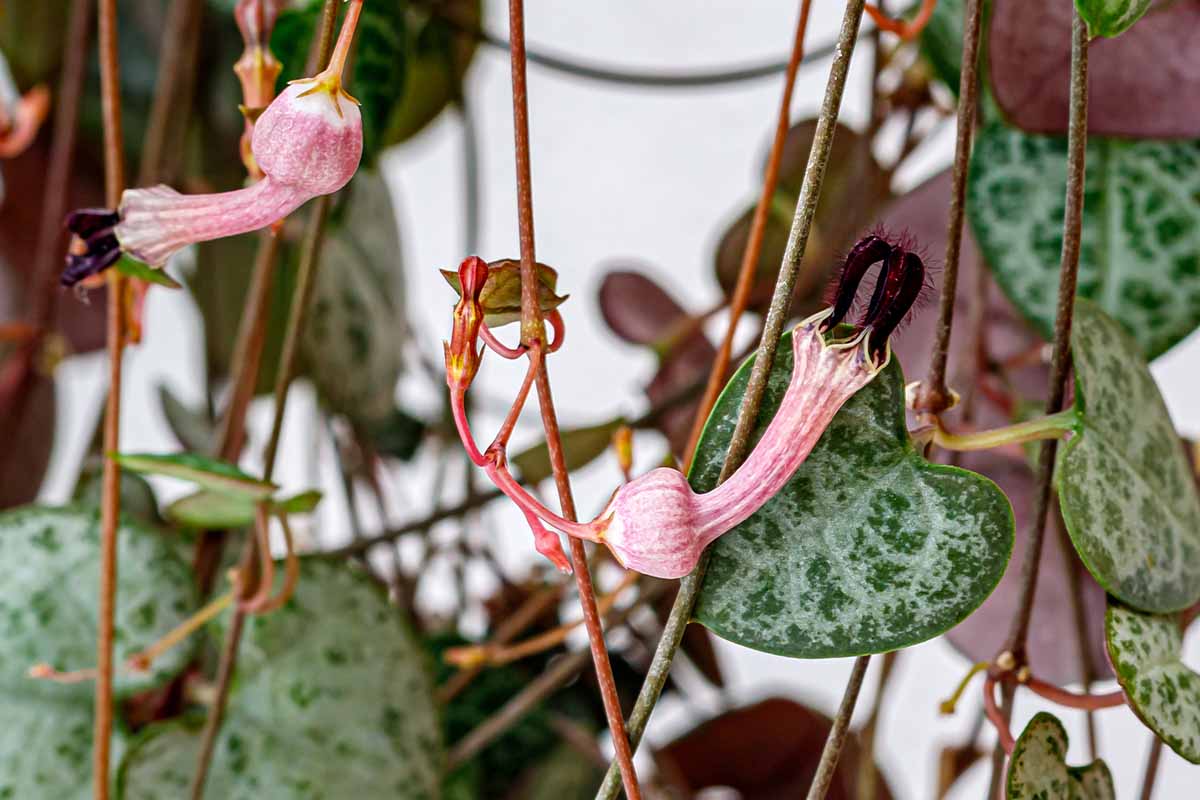
A romantic choice, the string of hearts plant accurately resembles its name with its trailing vines adorned by petite heart-shaped leaves, perfect for hanging baskets. Their foliage showcases intricate patterns, especially in variegated versions.
String of hearts, requiring slightly more water than some succulents, is sensitive to both overwatering and dry soil. The plant thrives with a balance, appreciating moderate watering without getting waterlogged.
String of Pearls
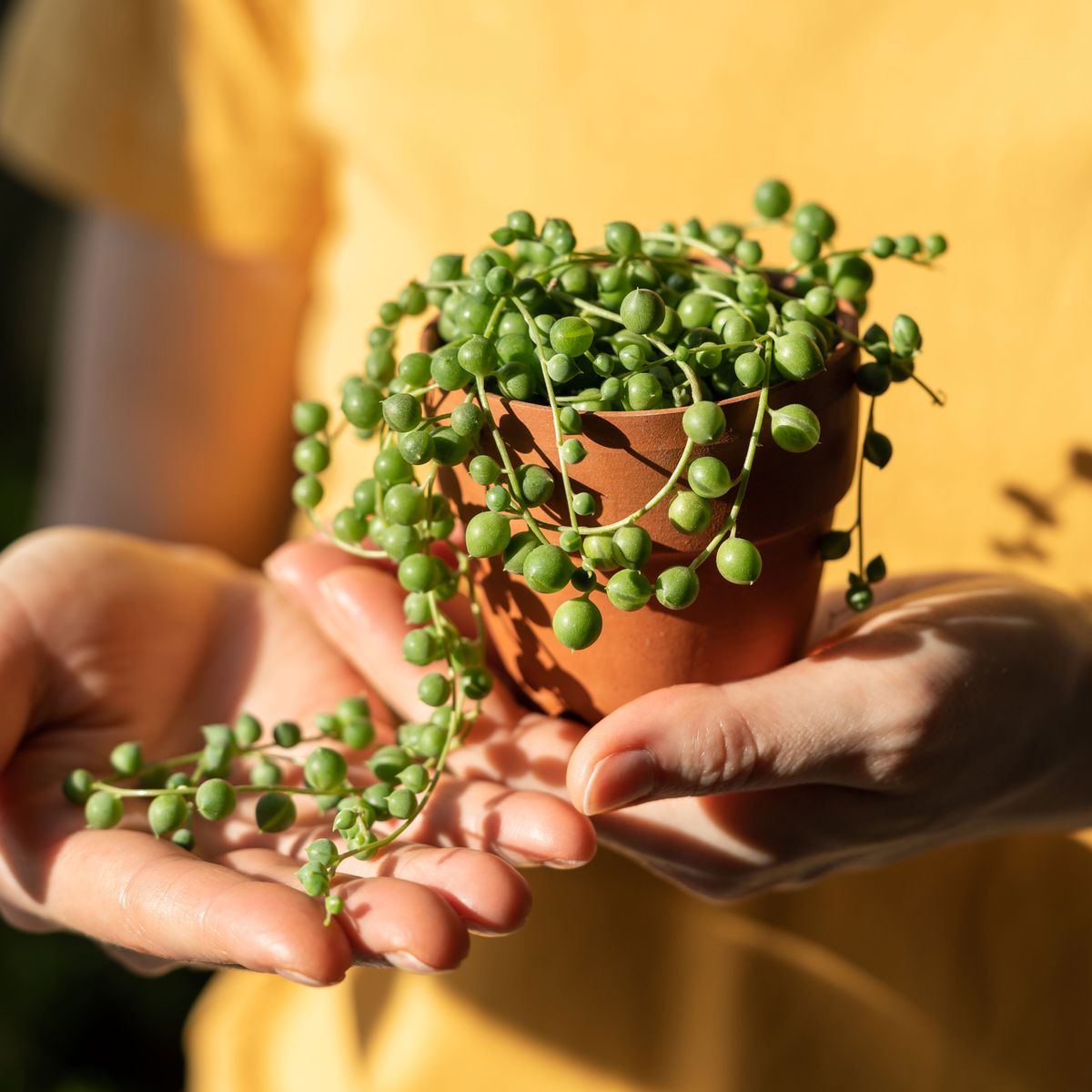
The delightful string of pearls succulent, ideal for indoor environments or mildly shaded areas, features lush cascading vines decked with petite spherical leaves. In ample light, the leaves cluster closer together, showcasing their enchanting appearance.
String of pearls can be a challenge for beginners due to their sensitivity to watering and light levels. Providing indirect light and avoiding overwatering can help beginners successfully grow this beautiful plant.
Final Thoughts
Whether you’re a novice in the world of succulents or gardening in general, selecting any of these 27 plants will simplify the care of your succulent garden.

